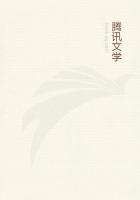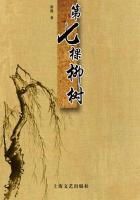To the "Catalogues", as we have said, was appended another work, the "Eoiae". The title seems to have arisen in the following way (10): the "Catalogues" probably ended (ep. "Theogony" 963 ff.)with some such passage as this: `But now, ye Muses, sing of the tribes of women with whom the Sons of Heaven were joined in love, women pre-eminent above their fellows in beauty, such as was Niobe (?).' Each succeeding heroine was then introduced by the formula `Or such as was...' (cp. frags. 88, 92, etc.). A large fragment of the "Eoiae" is extant at the beginning of the "Shield of Heracles", which may be mentioned here. The "supplement" (ll.
57-480) is nominally Heracles and Cycnus, but the greater part is taken up with an inferior description of the shield of Heracles, in imitation of the Homeric shield of Achilles ("Iliad" xviii.
478 ff.). Nothing shows more clearly the collapse of the principles of the Hesiodic school than this ultimate servile dependence upon Homeric models.
At the close of the "Shield" Heracles goes on to Trachis to the house of Ceyx, and this warning suggests that the "Marriage of Ceyx" may have come immediately after the `Or such as was' of Alcmena in the "Eoiae": possibly Halcyone, the wife of Ceyx, was one of the heroines sung in the poem, and the original section was `developed' into the "Marriage", although what form the poem took is unknown.
Next to the "Eoiae" and the poems which seemed to have been developed from it, it is natural to place the "Great Eoiae".
This, again, as we know from fragments, was a list of heroines who bare children to the gods: from the title we must suppose it to have been much longer that the ****** "Eoiae", but its extent is unknown. Lehmann, remarking that the heroines are all Boeotian and Thessalian (while the heroines of the "Catalogues"belong to all parts of the Greek world), believes the author to have been either a Boeotian or Thessalian.
Two other poems are ascribed to Hesiod. Of these the "Aegimius"(also ascribed by Athenaeus to Cercops of Miletus), is thought by Valckenaer to deal with the war of Aegimus against the Lapithae and the aid furnished to him by Heracles, and with the history of Aegimius and his sons. Otto Muller suggests that the introduction of Thetis and of Phrixus (frags. 1-2) is to be connected with notices of the allies of the Lapithae from Phthiotis and Iolchus, and that the story of Io was incidental to a narrative of Heracles' expedition against Euboea. The remaining poem, the "Melampodia", was a work in three books, whose plan it is impossible to recover. Its subject, however, seems to have been the histories of famous seers like Mopsus, Calchas, and Teiresias, and it probably took its name from Melampus, the most famous of them all.
Date of the Hesiodic Poems There is no doubt that the "Works and Days" is the oldest, as it is the most original, of the Hesiodic poems. It seems to be distinctly earlier than the "Theogony", which refers to it, apparently, as a poem already renowned. Two considerations help us to fix a relative date for the "Works". 1) In diction, dialect and style it is obviously dependent upon Homer, and is therefore considerably later than the "Iliad" and "Odyssey":
moreover, as we have seen, it is in revolt against the romantic school, already grown decadent, and while the digamma is still living, it is obviously growing weak, and is by no means uniformly effective.
2) On the other hand while tradition steadily puts the Cyclic poets at various dates from 776 B.C. downwards, it is equally consistent in regarding Homer and Hesiod as `prehistoric'.
Herodotus indeed puts both poets 400 years before his own time;that is, at about 830-820 B.C., and the evidence stated above points to the middle of the ninth century as the probable date for the "Works and Days". The "Theogony" might be tentatively placed a century later; and the "Catalogues" and "Eoiae" are again later, but not greatly later, than the "Theogony": the "Shield of Heracles" may be ascribed to the later half of the seventh century, but there is not evidence enough to show whether the other `developed' poems are to be regarded as of a date so low as this.
Literary Value of Homer Quintillian's (11) judgment on Hesiod that `he rarely rises to great heights... and to him is given the palm in the middle-class of speech' is just, but is liable to give a wrong impression.
Hesiod has nothing that remotely approaches such scenes as that between Priam and Achilles, or the pathos of Andromache's preparations for Hector's return, even as he was falling before the walls of Troy; but in matters that come within the range or ordinary experience, he rarely fails to rise to the appropriate level. Take, for instance, the description of the Iron Age ("Works and Days", 182 ff.) with its catalogue of wrongdoings and violence ever increasing until Aidos and Nemesis are forced to leave mankind who thenceforward shall have `no remedy against evil'. Such occasions, however, rarely occur and are perhaps not characteristic of Hesiod's genius: if we would see Hesiod at his best, in his most natural vein, we must turn to such a passage as that which he himself -- according to the compiler of the "Contest of Hesiod and Homer" -- selected as best in all his work, `When the Pleiades, Atlas' daughters, begin to rise...'
("Works and Days, 383 ff.). The value of such a passage cannot be analysed: it can only be said that given such a subject, this alone is the right method of treatment.

